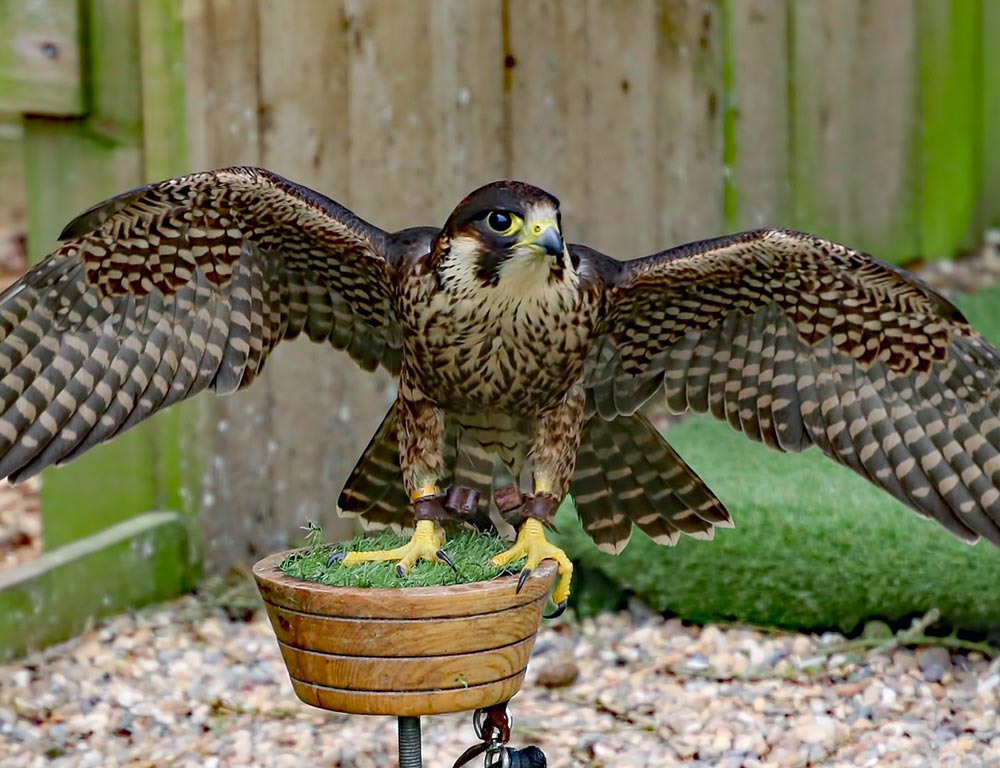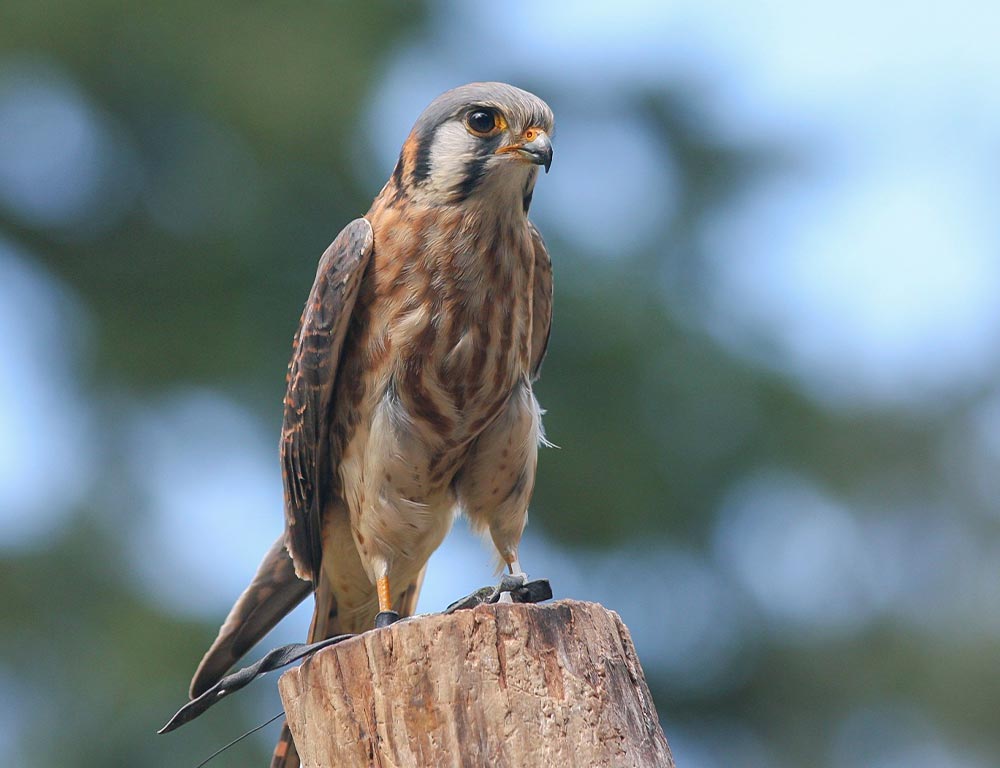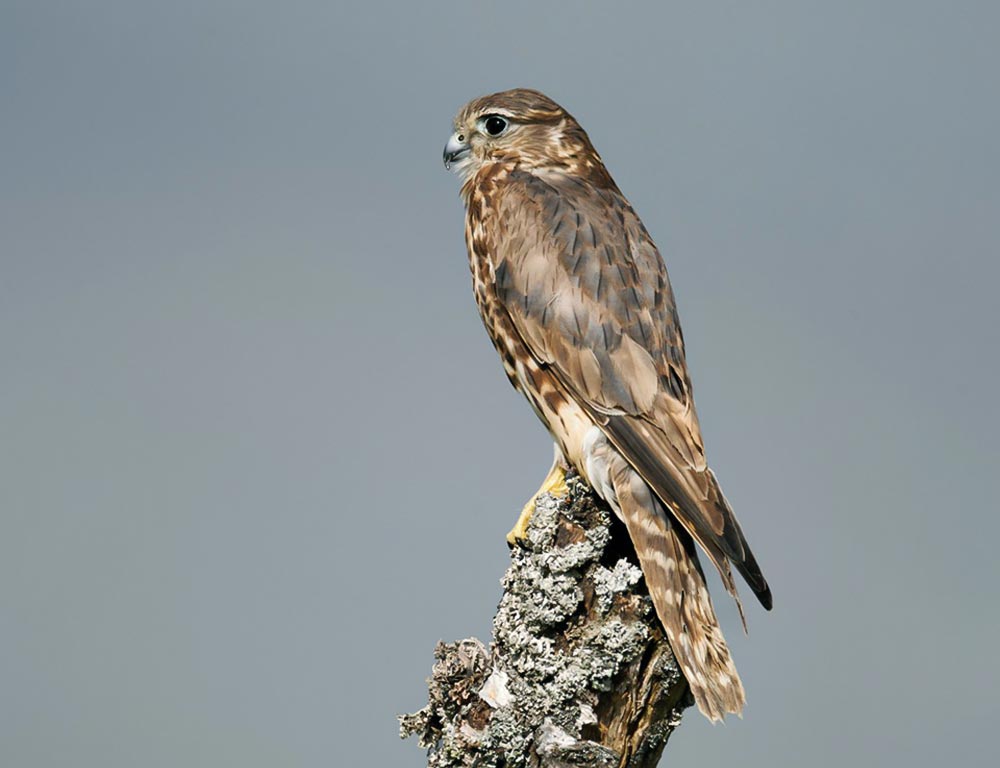Today’s discussion is about the fary-like bird, the falcon, in North Carolina. These birds paint a dynamic portrait of avian life against the backdrop of the state’s diverse ecosystems.
North Carolina, with its varied landscapes ranging from coastal regions to mountainous terrain, provides a rich habitat for several fascinating falcon species.
From the iconic Peregrine Falcon to the agile American Kestrel, these raptors navigate the skies, embodying adaptability in their hunting and nesting behaviors.
In this exploration of Falcons in North Carolina, we delve into the distinct characteristics of these birds of prey, their crucial ecological roles, and the conservation efforts to safeguard their populations.
As the wind currents carry falcons’ wings across the Tar Heel State, we uncover the narratives that contribute to the intricate tapestry of wildlife in North Carolina.
Common Characteristics of Falcons in North Carolina
Falcons in North Carolina share common characteristics that define their adaptations to the diverse ecosystems within the state. These characteristics contribute to their success as formidable predators in various habitats.
Here are some common traits observed in falcons inhabiting North Carolina:
Sharp Beaks and Talons
Falcons possess strong, hooked beaks and sharp talons, ideal for tearing into prey. These adaptations are crucial for their carnivorous diet.
Exceptional Vision
Falcons are known for their remarkable eyesight, enabling them to spot prey from great distances. This acute vision aids in their precise hunting strategies.
Aerial Agility
Falcons are agile flyers, capable of intricate maneuvers in the air. This agility is particularly evident during hunting, as they pursue and capture prey mid-flight.
Territorial Behavior
Falcons exhibit territorial behavior, fiercely defending their nesting sites and hunting grounds. This behavior is crucial for securing resources and ensuring reproductive success.
Nesting Preferences
Falcons in North Carolina often nest in high locations, such as cliffs, trees, or structures like buildings and bridges. These elevated sites provide safety and a strategic vantage point for hunting.
Diverse Diet
While diet may vary among species, falcons in North Carolina commonly feed on small birds, mammals, and insects. Their ability to adapt their diet contributes to their ecological versatility.
Seasonal Migration
Some falcon species in North Carolina exhibit seasonal migration, traveling to different regions in response to changes in food availability and weather conditions.
Understanding these common characteristics helps highlight the role of falcons as apex predators in North Carolina’s ecosystems.
These adaptations are finely tuned to the challenges and opportunities presented by the state’s varied landscapes, contributing to the ecological balance of this southeastern region.
3 Types of Falcons in North Carolina
In the diverse landscapes of North Carolina, a fascinating array of falcons thrives, each contributing to the state’s ecological tapestry.
From the iconic Peregrine Falcon’s high-speed dives to the American Kestrel’s adaptability, discover the unique lifestyles of these remarkable birds of prey.
1. Peregrine Falcon

- Scientific Name: Falco peregrinus
- Category: Bird of prey
- Population: Recovering, stable in North Carolina
- Life Span: Up to 15 years
- Size: Approximately 15 to 20 inches in length
- Weight: 1.5 to 3.5 pounds
- Food: Primarily birds, especially pigeons and waterfowl
- Wingspan: 3.3 to 3.6 feet
- Status: Removed from endangered status, listed as “Least Concern”
Once threatened by pesticides, the Peregrine Falcon has made a remarkable recovery and is now a symbol of successful conservation efforts.
These falcons inhabit various landscapes in North Carolina, from coastal areas to urban environments. Peregrines are renowned for their high-speed hunting dives, striking down prey mid-air with incredible precision.
Their diet consists primarily of birds, with a preference for pigeons and waterfowl. Peregrine Falcons often nest on cliffs or tall structures, displaying strong territorial behavior.
Their recovery from endangerment is a testament to the effectiveness of conservation programs, and they are now listed as “Least Concern” in North Carolina.
2. American Kestrel

- Scientific Name: Falco sparverius
- Category: Falconidae
- Population: Stable and common in North America
- Life Span: 5 to 10 years
- Size: 8 to 12 inches in length
- Weight: 3.5 to 5.8 ounces
- Food: Insects, small mammals, birds, and reptiles
- Wingspan: 20 to 24 inches
- Status: Listed as “Least Concern”
The American Kestrel, the smallest falcon in North America, is a common and adaptable species found throughout North Carolina.
With vibrant plumage and a diverse diet, these falcons thrive in various habitats, including grasslands, farmlands, and urban areas.
American Kestrels are known for their hovering hunting technique, patiently scanning the ground for insects, small mammals, birds, and reptiles. They often nest in tree cavities or use abandoned nests of other birds.
Despite their small size, American Kestrels play a significant role in controlling insect populations. Their populations remain stable and are listed as “Least Concern” in North Carolina.
3. Merlin

- Scientific Name: Falco columbarius
- Category: Falconidae
- Population: Varied, stable in North Carolina
- Life Span: 5 to 10 years
- Size: 9 to 13 inches in length
- Weight: 5.6 to 8.5 ounces
- Food: Small birds, insects, and occasionally bats
- Wingspan: 20 to 26 inches
- Status: Generally stable, some regional concerns
The Merlin, a compact and agile falcon, is found in diverse habitats across North Carolina.
With a preference for open landscapes, these falcons exhibit remarkable aerial maneuvers during hunting. Merlins primarily feed on small birds, insects, and occasionally bats.
They are known for nesting in trees or on cliffs, displaying territorial behavior during the breeding season. While their populations are generally stable in North Carolina, some regional concerns warrant attention.
Merlins contribute to the ecological balance by controlling insect and small bird populations. Their adaptability to different environments underscores their resilience as predators in the diverse landscapes of North Carolina.
Best Places to Spot Falcons in North Carolina
North Carolina’s diverse landscapes allow birdwatchers and nature enthusiasts to spot various falcon species.
From coastal areas to mountainous terrains, here are some of the best places to witness these majestic birds of prey in action:
Cape Hatteras National Seashore
Along the coast, Cape Hatteras offers a unique environment for spotting Peregrine Falcons. The combination of cliffs, dunes, and expansive seashores provides an ideal habitat for these aerial predators.
Uwharrie National Forest
In the heart of the state, Uwharrie National Forest is a haven for diverse bird species, including Merlins. The forested landscapes and open areas offer opportunities to observe these agile falcons as they hunt and navigate through the trees.
Pilot Mountain State Park
Nestled in the Piedmont region, Pilot Mountain State Park provides an excellent vantage point for observing both Peregrine Falcons and Merlins. The rocky cliffs and open spaces create an inviting atmosphere for these birds.
Great Smoky Mountains National Park
The mountainous terrain of the Great Smoky Mountains National Park is home to various raptors, including Gyrfalcons. Patient observers may witness these powerful falcons soaring above the mountain ridges.
Jordan Lake State Recreation Area
With its expansive water bodies and surrounding woodlands, Jordan Lake attracts various birds, including the American Kestrel. Open fields and perching spots make it ideal for spotting this smallest falcon species.
Alligator River National Wildlife Refuge
In the northeastern part of the state, the Alligator River National Wildlife Refuge offers a diverse habitat where Peregrine Falcons can be observed hunting over marshes and open fields.
Cape Lookout National Seashore
Another coastal gem, Cape Lookout National Seashore, provides a backdrop for observing falcons, particularly the Peregrine Falcon, as they utilize the coastal cliffs and beaches for hunting.
Blue Ridge Parkway
As the scenic Blue Ridge Parkway winds through the mountains, it provides an opportunity to spot various falcon species. The open skies and varied elevations make it a promising location for raptor enthusiasts.
When exploring these locations, practicing responsible birdwatching and respecting wildlife and their habitats is essential.
Patience and a keen eye will reward observers with glimpses into the captivating lives of falcons in the diverse landscapes of North Carolina.
How to Preserve Falcons in North Carolina?
Preserving falcons in North Carolina requires a combination of habitat conservation, minimizing human-induced threats, and fostering public awareness.
Here are key strategies to ensure the continued well-being of falcon populations in the state:
Habitat Protection and Restoration
Identify and protect critical falcon habitats, including cliffs, trees, and open spaces, through conservation programs and land management initiatives.
Implement habitat restoration projects to enhance nesting sites, ensuring a sustainable environment for falcons to thrive.
Mitigating Human Disturbance
Enforce and raise awareness about regulations to minimize human disturbance, particularly during the falcon breeding season. Educate the public about responsible outdoor activities to avoid disruptions to nesting sites.
Reducing Pesticide Use
Monitor and regulate the use of pesticides in areas frequented by falcons, as these chemicals can adversely affect their reproductive success and overall health.
Promote integrated pest management practices that minimize the impact on non-target species.
Nest Box Programs
Establish and maintain nest box programs, especially for species like the American Kestrel, providing artificial nesting sites in areas where natural cavities may be limited.
Monitor and maintain the nest boxes regularly to ensure their suitability and safety for falcon breeding.
Community Engagement and Education
Conduct outreach programs in local communities, schools, and nature centers to raise awareness about the importance of falcons in the ecosystem.
Encourage citizen participation in reporting falcon sightings, contributing to monitoring efforts, and fostering a sense of stewardship.
Research and Monitoring
Support ongoing research initiatives to understand better the ecology, behavior, and migration patterns of falcons in North Carolina.
Establish long-term monitoring programs to track population trends, identify potential threats, and assess the effectiveness of conservation measures.
Collaboration and Partnerships
Foster collaboration among government agencies, conservation organizations, researchers, and the public to develop and implement effective conservation strategies.
Form partnerships with landowners to promote falcon-friendly land management practices.
By adopting a holistic approach that combines habitat preservation, awareness campaigns, and scientific research, North Carolina can play a crucial role in safeguarding its falcon populations.
These efforts will benefit falcons and contribute to the overall health and biodiversity of the state’s ecosystems.
Wrapping Up
In safeguarding falcons in North Carolina, a harmonious blend of habitat conservation, responsible human practices, and community engagement emerges as the key to securing the future of these magnificent birds.
By prioritizing the preservation of critical habitats, implementing educational initiatives, and fostering a collective commitment to conservation, we ensure that the skies of North Carolina remain adorned with the grace and resilience of its diverse falcon species.
The success of these endeavors not only elevates the well-being of falcons but also contributes significantly to the state’s overall ecological balance and biodiversity.